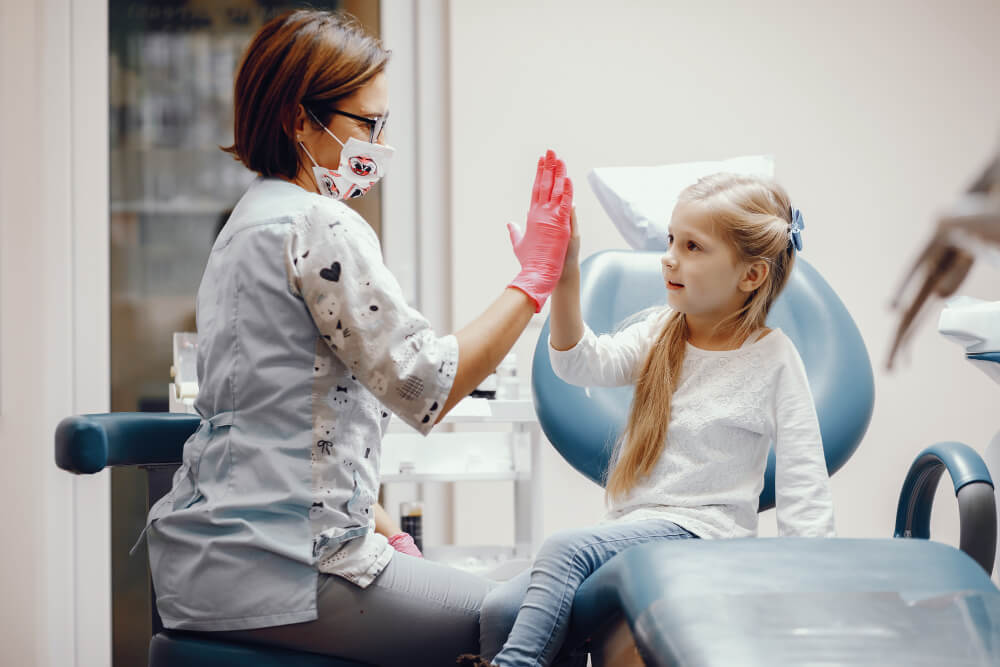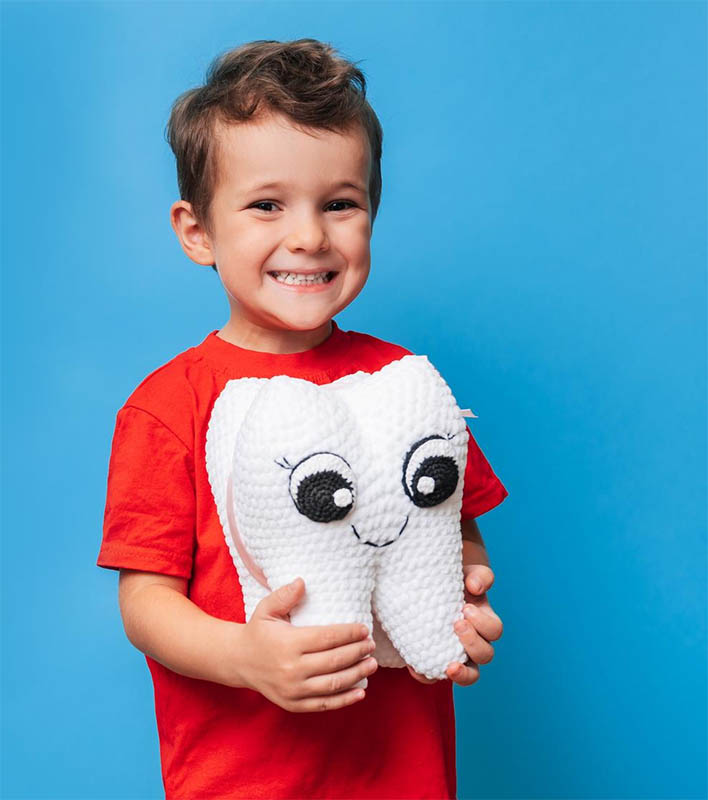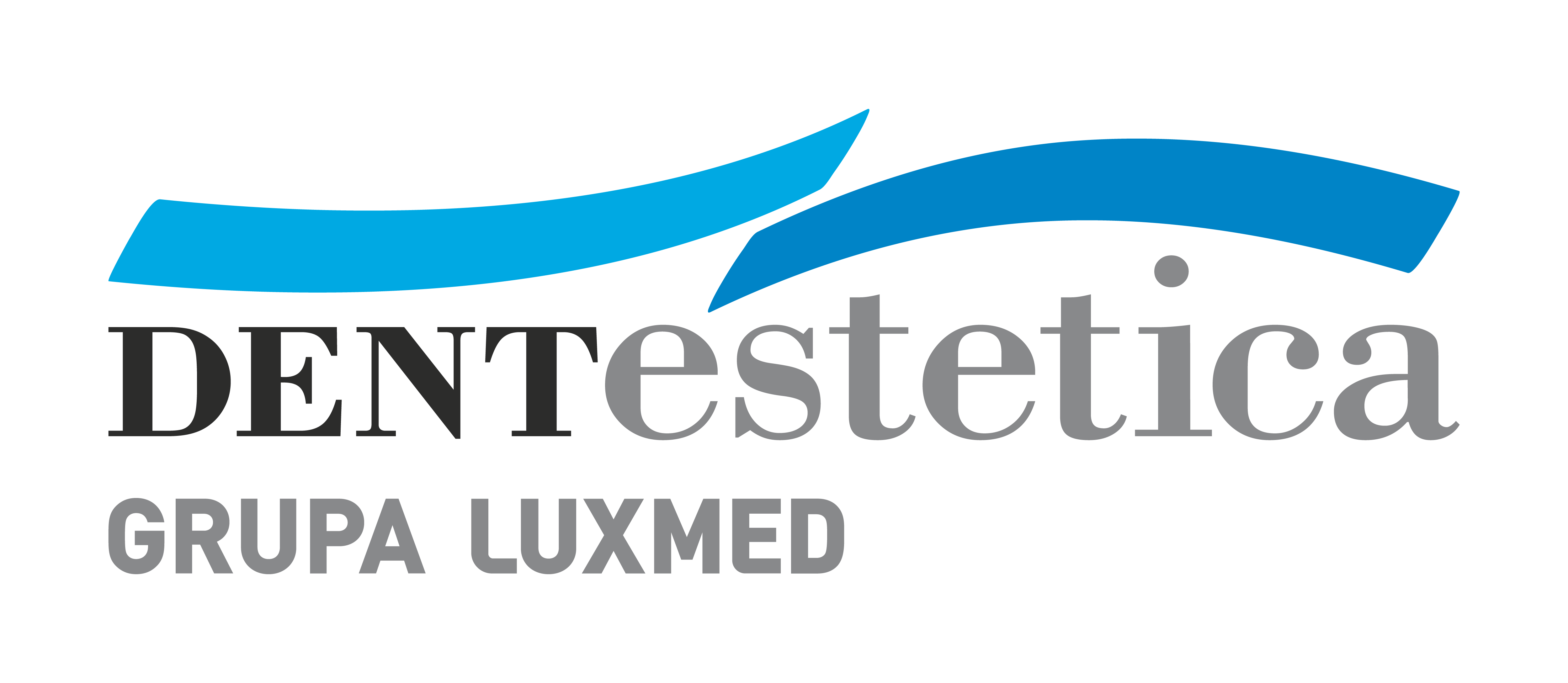Children's Dentist in Krakow
When should you schedule the first dental visit with your child?
The first and second years of a child’s life are an excellent opportunity to familiarize the little one with the dental office and the dentist. It’s also a good time to provide parents with practical advice and guidance on proper tooth and gum care.

Children's Dentist - step by step

Your child’s first visit to the dentist should be made shortly after the appearance of the first milk teeth, usually between the first and second year of age. This is a great opportunity to make the toddler acquainted with the office and the doctor, and to give parents practical advice and guidance on the proper care of teeth and gums.
As the comfort of patients of all ages is extremely important to us, we have created a special dental treatment room for children in our clinic. We have also implemented procedures that ensure a safe, peaceful and stress-free visit. The friendly atmosphere, the toy corner, colourful fillings, and specially trained personnel are our proven recipe for success.
Dental Treatment Under Anesthesia for Children
In an ideal world, all children would have healthy teeth and not be afraid of dentist visits. Unfortunately, cavities can affect even the youngest patients, causing pain and anxiety. At DENTestetica, we offer comprehensive dental treatment, even under anesthesia, ensuring safety, comfort, and effectiveness, eliminating unpleasant experiences associated with dental care.
Anesthesia
It allows for precise local anesthesia for almost any type of procedure. It operates below the threshold of human pain, meaning that administering anesthesia in this form is virtually painless.
Inhalation Sedation
Inhalation sedation for children is performed using a mask with the use of laughing gas. It helps alleviate a child's fear and enables the completion of necessary procedures. It is used for quick procedures such as the extraction of a primary tooth or cavity filling. It's important not to eat or drink anything for 3 hours before the procedure.
General Anesthesia
Procedures under general anesthesia involve complete anesthesia with intubation. They can be applied even to children under 4 years old. General anesthesia is used in cases where pain and anxiety control is challenging, especially in younger children or for complex procedures. It is an important tool that allows dentists to perform effective and safe treatment for patients. The procedure is conducted with an anesthesiologist, and the patient should be fasting (not eating for 6 hours and not drinking for 3 hours).
Comprehensive treatment
Children often require multiple dental procedures, such as fillings or tooth extractions. Treatment under anesthesia allows for the completion of all necessary procedures in one visit, reducing the need for multiple appointments and minimizing stress for both the child and the parent.
Safety and comfort
Anesthesia allows for the complete immobilization of the child, minimizing pain and discomfort associated with dental procedures. The child is safely put to sleep, and the procedure is carried out under the vigilant supervision of experienced medical personnel, ensuring maximum safety and comfort.
Effectiveness
Children, especially younger ones, may be restless, fearful, or unable to cooperate during dental treatment. The use of anesthesia allows for full control over the patient, facilitating precise and effective procedures. The dentist has complete freedom in performing the treatment, and the child does not experience pain or discomfort.
Minimization of Trauma and Fear
Dental visits can be a traumatic experience for children, leading to fear of dental treatment in the future. Treatment under anesthesia helps minimize trauma because the child is unaware of the procedure's progress and does not remember unpleasant experiences.
We understand how stressful a dental visit can be for children and their parents. That’s why the youngest patients at DENTestetica Krakow can always count on a special approach, and our staff makes every effort to ensure that the dental office becomes a friendly place for them.
Learn more
First dental treatment
Although prevention is always better than cure, a doctor’s intervention sometimes becomes a necessity. The modern technological solutions used at our clinic allow us to completely eliminate pain and significantly minimize the scope of procedure performed on a pediatric patient.
Minor cavities are treated with ozone therapy – a method that does not require tooth drilling. In the case of larger cavities and more complicated procedures, special drugs and computer-assisted anesthesia are used.
Fear of pain is the most common cause of stress in little patients. Because traditional methods of anesthesia are rather unfriendly to children, we use the high-efficiency WAND STA® computer-assisted anesthesia system. The tip of the device does not resemble a “menacing” syringe with a needle.
For the youngest patients who are very afraid of the dentist and reluctant to cooperate, there is a possibility of administering inhalation sedation, i.e. a sedation using a small dose of the so-called laughing gas.
Aesthetic aspects are also important in the treatment of children’s teeth. The ability to choose the colour of a filling is an additional attraction, as well as an effective way to distract the child from the procedure itself.
Adaptation visits
Adaptation visits organized by DENTestetica are meetings intended to familiarize the child with our personnel and with devices and tools that can be found in our clinic. During the visit, children learn the basic principles of oral hygiene and get accustomed to the new place. At the end of the meeting, each little patient receives a reward for courage and as an encouragement for further meetings.
Dental X-ray for kids
The special design of the X-ray apparatus used at DENTestetica Kraków, which emits a significantly reduced dose of radiation, allows taking safe dental X-rays of children and adolescents. Moreover, in order to avoid exposing the youngest patients to radiation, instead of classic X-rays we also perform special diagnostic examinations using the DiagnoPen laser. It is fast, safe for the child and, of course, totally painless.
Treatment of milk teeth
Some people believe that milk teeth should not be treated because they eventually fall out anyway, but this belief is totally false and very harmful to the proper development of the child’s dentition. Good oral hygiene habits should be developed at the earliest possible age, because only proper oral care can protect from tooth decay and other oral diseases.
Untreated dental cavities cause premature tooth loss and may result in occlusion defects and the necessity for complicated orthodontic treatment at a later age. That is why it is so important to respond to the smallest signs of tooth or gum disease.
With the DiagnoPen laser, cavities can be identified and detected already at the early stage of their development, without having to take X-rays of the child’s teeth. Early diagnosed cavities can be treated with ozone and intensive remineralization instead of drilling. If the problem is more extensive and requires a classic approach, we use computer anesthesia and special fillings used in milk teeth only, which release large amounts of fluoride and are available in many attractive colours.
If a damaged milk tooth must be extracted, the gap left after the extraction is filled with the so-called space maintainer for permanent teeth that significantly reduces the risk of occlusal defects.
Treatment of incompletely developed permanent teeth
The first permanent molars usually erupt at around six years of age. They are teeth number six located behind the last milk teeth. The occlusal surface of the new teeth should be protected as soon as possible with special fluoride release preparations (so called sealing). It is possible to use additional protection by applying fluoride varnish.
If there is a need for endodontic treatment of an underdeveloped young tooth, the tooth is filled with a dedicated bioregenerative preparation, which actively boosts the development of the root.
Fluoride varnishing, sealing and silver nitrate treatment of milk and permanent teeth
Teeth varnishing is the application of a transparent fluorinated varnish on the surface of the teeth with a micro brush. Approximately 48 hours after the procedure, the varnish flakes and the fluoride contained in it is integrated into tooth tissues. It strengthens the enamel and reduces its proneness to tooth decay. It is recommended to use varnish on both milk and permanent teeth.
Sealing is a treatment performed on freshly erupted permanent lateral teeth with occlusal surfaces unaffected by tooth decay. It consists in sealing the grooves and fissures using light-cure resins or bioactive cements that release large amounts of fluoride. It is also possible to coat lateral surfaces of healthy teeth.
Cavity treatment with silver nitrate is a treatment intended for milk teeth severely damaged by tooth decay, where the degree of damage makes it impossible to use classical fillings. It consists in impregnating tooth pulp with a bactericidal substance that stops the process of caries development.
Call us
To schedule an appointment, please call the phone number +48 887 05 05 01 or +48 887 05 05 02
Set the route
The clinic is located at Kamienna Street 21 in Krakow in the Stare Miasto district. Free parking is available for patients.
Working hours
Our clinic is open from Monday to Friday, from 9 AM to 8 PM. More info here.
